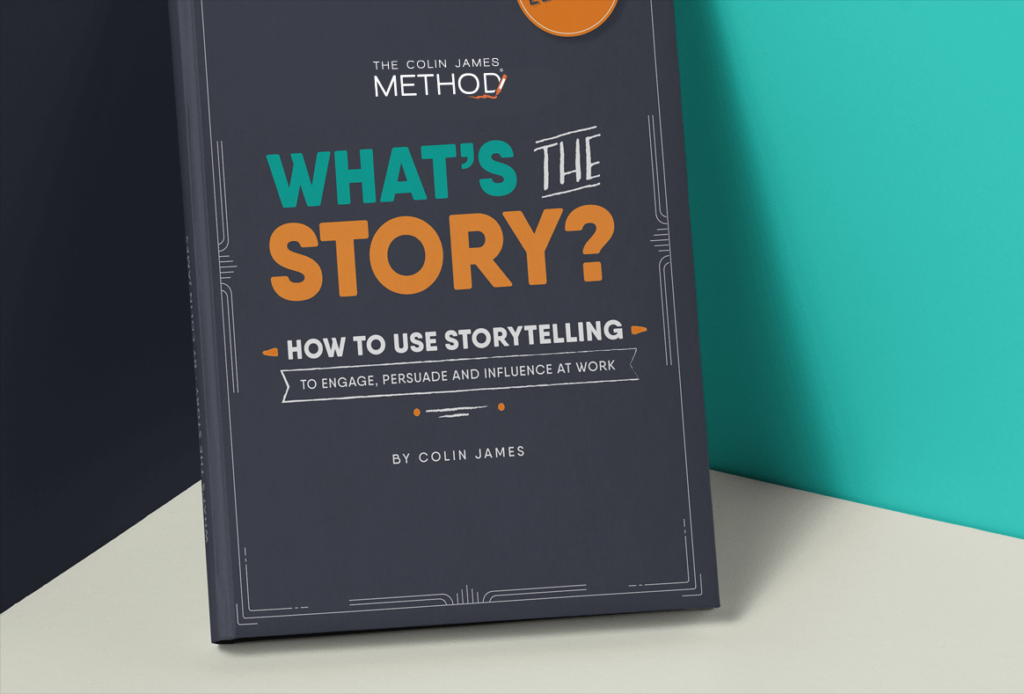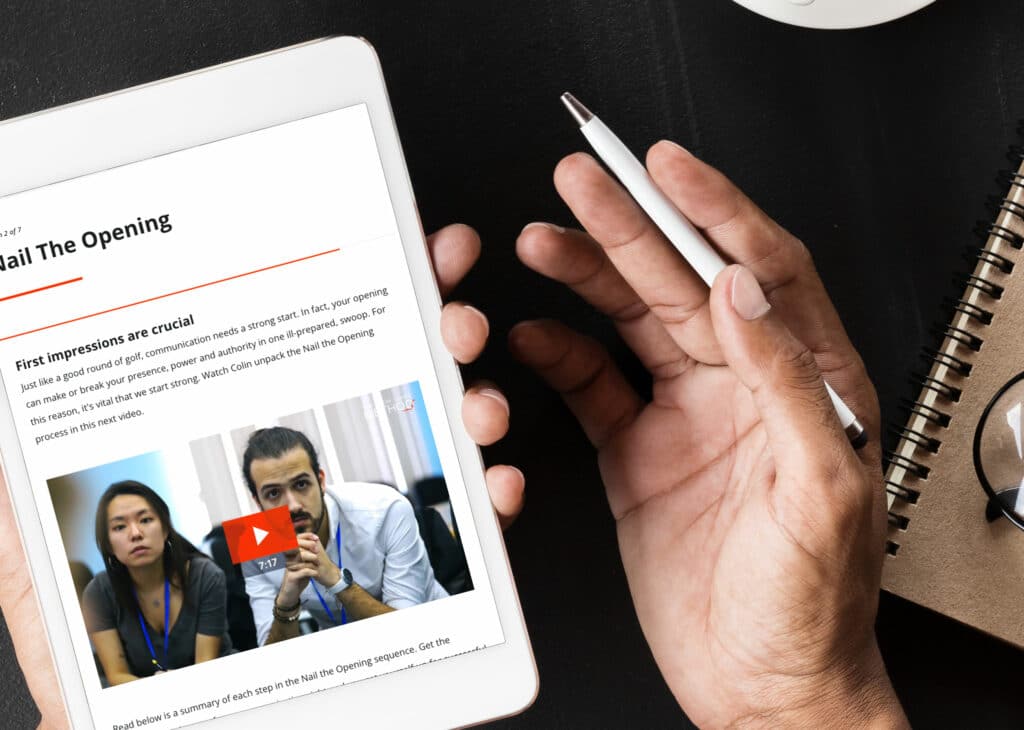We’ve all had that teacher that makes learning feel like wading through quicksand. In fact, your entire schooling career may have been comprised of dull educators who were more concerned with getting the lesson over with, so that they could pour all of their energy into their true passion: writing romance novels under an improbably hyperbolic name.
If you were lucky though, you had that other teacher. The one that breezed into the school with poise and passion, and transformed biology class from an impenetrable, gluggy swamp to something teeming with life and possibility. That teacher made the class feel like it had landed in Oz by turning everything that was black and white into gleaming technicolour.
For Colin James, his technicolour teacher propelled him on the path to understanding why some people can effortlessly command a room, while others make you want to get into the foetal position and wait for the presentation to be over:
‘When I was 15 and at boarding school, we had this creepy old teacher for our biology studies. When he left, he was replaced by a woman named Dawn Knight (really!) and in one swoop she transformed everything for us. From that point, everyone excelled and I remember thinking: This is what a teacher should be and from that point I began to track and calibrate how people communicated.’
This is how the P.A.V.E.R.S® methodology was born. P.A.V.E.R.S® is an acronym that comprises of Physiology, Auditory, Visual Aids, Energy, Relationship and Storytelling. All of these six elements combined help you to transform your communication skills. The methodology allows people who feel terrified by the thought of public speaking to work with a structure, helping them to gain confidence, breakthroughh self-consciousness barriers and communicate with intention and flair.
So what exactly are they?
Physiology
Physiology is your nonverbal communication. It is your posture, your facial expressions, your gestures and your movement and how you present yourself to a room before you’ve uttered a word. It is a key component in generating confidence. And we don’t mean in how the room perceives you. As Harvard Professor and social psychologist, Amy Cuddy discovered, your posture can actually change your hormone levels, fundamentally making you more confident.
Auditory
Our voices can wield enormous power yet we don’t focus on training them. If you listen to any radio broadcaster or newsreader you can start to detect similarities in their delivery. For example media personalities, politicians and doctors are all trained to use ‘the low and slow method.’ This method is especially important now that phone conferences are such a feature of working life. If you want your point to resonate, then make sure your voice does.
Visual Aids
As a leading US military leader has stated: ‘When we understand the slides, we’ll have won the war.’ Too often presenters use PowerPoint as a crutch, loading their whole speeches onto those small frames and reading off them. Snoresville. Such practices have given poor old PowerPoint a bad name. PowerPoint can be very effective (as can flipcharts) but think about how they can enhance what you are trying to say. They should merely be the support act. You are the main event.
“PowerPoint can be very effective (as can flipcharts) but think about how they can enhance what you are trying to say. “
Energy
Want to have the verve of a young Mick Jagger (or even present-day Mick Jagger)? Even if you’re quaking in your boots at the thought of getting up in front of people, you can have great energy. The trick is to change your intention. Focus on what the audience needs, what they can learn from you and how they can be entertained and confidence will start to unfurl. If you need some help, then the power poses found in our physiology blog are a good start.
Relationships
Respect. Rapport. Trust. These are the fundamentals of a good relationship. During a presentation, you should be creating these elements immediately. The easiest way to do this is to demonstrate that you have put time and effort into making your presentation valuable for those in the room. That automatically says: You are worth my time and energy. Other ways to establish a great relationship is to make eye-contact, learn a bit about the people in the room, ask them to contribute and mindfully acknowledge them when they do so.

Storytelling
Stories allow us to vicariously navigate a new experience. They can solidify a concept in a way that facts and figures cannot, by giving rich context. This can make a cold, corporate presentation feel dynamic and intimate. Stories help the audience relate to the speaker on a human level. And they don’t have to be epic. Everyday stories and small anecdotes can be just as engaging and meaningful. Every time you give a presentation, you should be thinking about how you can weave in a story to highlight your point.
The P.A.V.E.R.S® method isn’t a quick solution to a very common problem. Becoming a great communicator can take time and practice. Just like learning to drive, you want to be able to test all of your skills in all conditions before you feel as though you can call yourself an experienced driver. With practice and intention, you will blossom into a presenter who has the potential to walk into a room and powerfully impact your audience. You could be the technicolour teacher. To learn more about the P.A.V.E.R.S® method and how you can be a better presenter, download our guide to creating a memorable presentation today.

The Colin James Method® Facilitators train corporate executives to improve their professional communication skills with a proven methodology. Our highly trained Facilitators and Coaches are recognised for their experience in their fields and have worked with many individuals and organisations around the world to master the art of communication.












